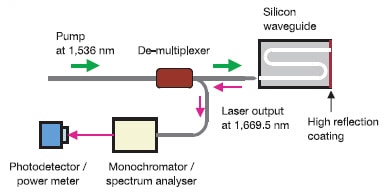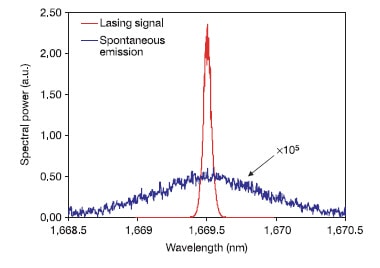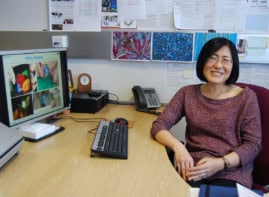Scientists at Intel have made the first all-silicon laser. The breakthrough could lead to the development of silicon chips that can be used in both electronic and photonic applications. Existing photonic devices are made from expensive compound semiconductor materials such as gallium arsenide or indium phosphide (H Rong et al. 2005 Nature 433 292).

Silicon dominates the microelectronics industry but it is not used in photonic applications because it does not emit light efficiently. Last year, however, researchers at the University of California at Los Angeles discovered a way to exploit the Raman effect and achieve laser action in silicon, although their device needed an eight metre long optical fibre to work. The Raman effect, which uses vibrations in a material to create optical gain, is routinely used in the telecommunications industry to amplify optical signals.
Now, Haisheng Rong and colleagues at Intel labs in Santa Clara, California and Jerusalem in Israel have made a compact all-silicon Raman laser on a single silicon chip. Rong and co-workers started by making an S-shaped silicon waveguide with standard photolithography and etching techniques. The waveguide had an effective core area of about 1.6 square microns and was around 4.8 centimetres long. Next, they fabricated the Raman laser optical cavity by coating one of the waveguide facets with a highly reflecting material.
The Intel team then pumped the cavity with pulses from a laser operating at a wavelength of 1536 nanometres (figure 1). The optical cavity began to lase at a wavelength of 1669.5 nanometres when the pump power reached 0.4 microwatts (figure 2). At present the device can only operate for about 100 nanoseconds before a process called two-photon absorption stops the laser action.
“The laser was fabricated in an existing Fab using standard high-volume manufacturing processes,” says Victor Krutul, technology strategist for silicon photonics at Intel. “Intel, as well as other researchers, is now working to solve the two-photon absorption problem so that the real breakthrough — a continuous-wave silicon laser — can be attained.” Krutul adds that the goal of the company’s silicon photonics research programme is to “siliconize” all the components needed to build a device known as a transceiver.



